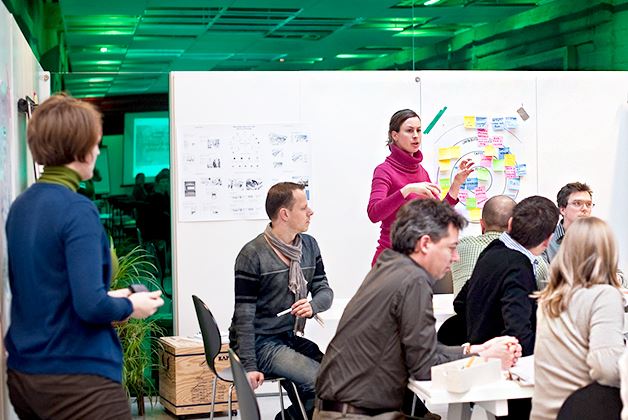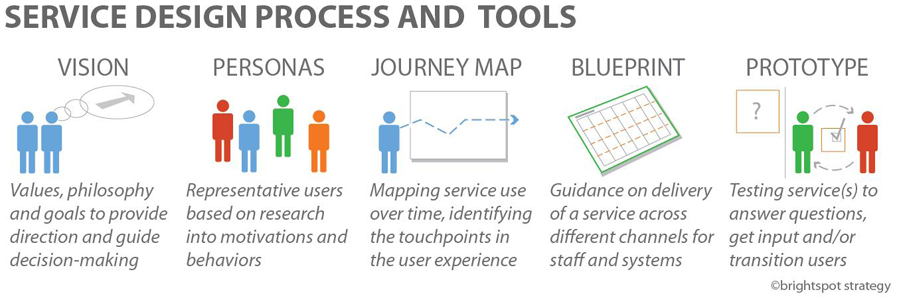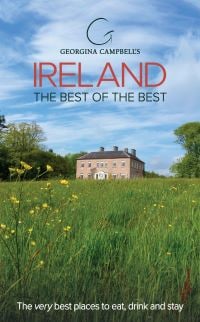What is Service Design and Why is it Important for Tourism?
 The tourism sector is constantly becoming more and more transparent through social media and review websites. Nowadays, it’s the individual guest’s experience that makes or breaks the success of a tourism product.
The tourism sector is constantly becoming more and more transparent through social media and review websites. Nowadays, it’s the individual guest’s experience that makes or breaks the success of a tourism product.
Thus, the focus in tourism shifts from mere marketing communications to meaningful experiences. Indeed it is widely accepted in the restaurant sector that no matter how amazing the food is, a customer can be lost due to poor service. Service design thinking can provide an in-depth and holistic understanding of customers to co-create meaningful experiences with guests.
This evolving way of thinking can help make the experiences your organisation delivers useful, usable, efficient, effective and desirable. Product designers create things (iPhones, shoes, etc.), while service designers understand how a series of interactions make up a customer experience, like making a reservation online or finding information about a hotel or restaurant.
I recently had the opportunity to attend a workshop on service design, where we mapped the service offered to three different customer groups in a gallery. This was an in-depth process looking at the consumer’s expectations of the product versus the actual experiences of the product delivery process. In the gallery the product offering consisted of multiple service touchpoints which customers perceive prior to, during and after their engagement with the gallery.

The real engagement and value of insights achieved in the workshop came from including staff at all levels, from front facing team to administration, communications and a customer representative from the gallery’s main customer segments. The process we followed covered the following steps:
User-centered where services were examined as they were experienced through the customer’s eyes.
Co-creative where all stakeholders were identified and included in the service design process.
Sequencing where the service was visualised as a sequence of interrelated actions and several maps were completed during the day.
Evidencing where intangible services were visualized in terms of physical artifacts.
Holistic where the entire environment of a service was considered – this included walking up the street to map first impressions of the gallery and touring the full gallery experience. This exercise took just 45 minutes and gave fantastic insights into everything from signage to visibility to how easy the door was to open, to engagement with the gallery team, placement of information etc.
The competitiveness of any service product ultimately depends on customer satisfaction, which is determined by the perception of the experience. Matching, or even exceeding, customer expectations is crucial for generating customer satisfaction and needs to be constantly designed and measured.
The better your organisation understands the overall service experience, the better you can make this experience and in many cases spot opportunities to introduce new services.
A great example of this kind of thinking is Virgin Atlantic’s move to include door to door shuttle transfers as part of their first class service. When mapping the customer experience they discovered the opportunity of including the journey to and from the airport (often a major stress point) as part of the overall Virgin experience. This link shows some of the work completed by Engine to help enhance the pre- and post-flight experience at Virgin’s London Heathrow Terminal 3.
In a nutshell, service design in tourism equals putting people first. In order to generate a relevant, integrated and attractive customer experience, it’s necessary to consider the entire span of the customer’s journey through your service product to understand both their needs and their expectations; the value this awareness can add to a tourism business is immeasurable.
For further information on service design and a great toolkit check out www.servicedesigntoolkit.org/
--
http://www.irishdesign2015.ie/liminal/
http://www.irishdesign2015.ie/programme/single/appetite-for-design
http://wearedesigngoat.com/
* ID2015 is delighted that the inaugural Irish Tourism Industry Awards have included a special award to highlight good design in Tourism. For more information http://www.irishtourismindustryawards.ie/categories/
* Irish Design 2015 partners include Founding Partner - MCO Projects; Accommodation Partner - The Doyle Collection; Venue Partner - OPW; Exhibition Partners – DAA. Technology Partner - IBM
An overview of the core programme of events can be found at www.irishdesign2015.ie

Aileesh Carew is the Tourism Advisor for Irish Design 2015. Her role is to provide advice and management of the tourism programme for the year of Irish design 2015, to communicate and animate interest in the Year of Design – nationally & internationally - and engage with tourism industry partners to raise awareness for Irish Design 2015. She has spent most of her career managing hotels, most recently opening Ballyfin Demesne in Co Laois, putting it on the international map as one of the best small hotels in Europe. A graduate of Shannon College of Hotel Management, with an MBA from Copenhagen Business School and Business Management Coaching from Scandinavian Leadership, she loves to travel, read cookery books, occasionally cooking from them, eat out and spend time with her family.
www.facebook.com/Irishdesign2015
@irishhdesign2015
instagram.com/irishdesign2015






There are currently no comments
Leave a comment
Not a member? Register for your free membership now!
Or leave a comment by logging in with: